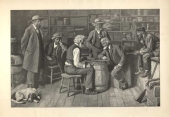The Checker Maven
The World's Most Widely Read Checkers and Draughts Publication
Bob Newell, Editor-in-Chief
Published every Saturday morning in Honolulu, Hawai`i
Noticing missing images? An explanation is here.
4th of July 2022

Although this column is being written some weeks in advance, it looks as though 4th of July 2022 is going to be a vast improvement over the past Covid years. Although we know that Covid will never be completely gone, we're back to at least some semblance of normal, and there will be 4th of July parades and outdoor celebrations. And while the world situation and the economy could be better, we're happy for what we have, and most of all we're happy and proud to be Americans and we love celebrating the anniversary of our nation's independence.
On such holidays we often turn to another American patriot, the great champion Tommie Wiswell. Today we have a problem he called Blitz, and you'll see why when you solve it.
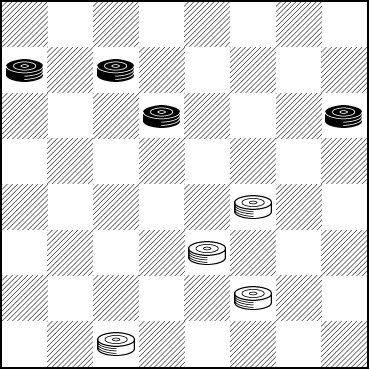
WHITE
White to Play and Win
W:W19,23,27,30:B5,6,10,12
See if you can win it. You don't have to play "blitz" --- take all the time you want, but when you're finished, definitely blitz your mouse over to Read More to see the solution.![]()
Bad Teacher

Bad Teacher was a terrible film from the year 2011. We certainly don't recommend it, but the idea does lead us nicely into today's Checker Maven column.
LARNER TRIES TO TEACH
"This is the way," said Larner impatiently as he persisted in rapidly solving a problem without giving the boastful Skittle a trial.
Galileo once said, "You cannot teach a man anything; you can only help him to find it within himself." How could Skittle learn without being permitted to make mistakes and then correct them?
Since 1775, due largely to the experiments of Johann Pestalozzi, the science of education has been based on problem solving or reasoning, rather than on memorizing. This Swiss educationalist combined manual with mental exercises. Teachers merely develop your latent power. You learn mainly by practice!
The preceding short selection is from Andrew J. Banks' eclectic book, Checker Board Strategy. It seems that Mr. Larner, whoever he was, is an example of a bad teacher. Is it true, for our game of checkers, that we learn mainly by practice, and that teachers merely develop our latent power?
That could be the subject of an extended and interesting debate. But for the moment, let's get some practice, with today's rather easy problem. It's really at the beginner level but more experienced players should see if they can solve it with just a quick glance.
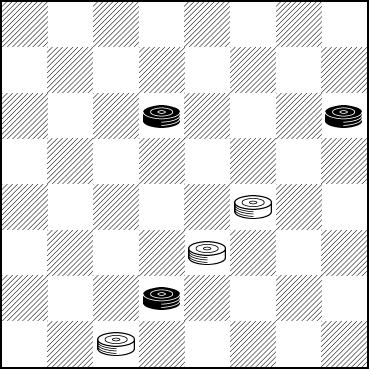
WHITE
White to Play and Win
W:W19,23,30:B10,12,26
Did you solve it rapidly? Did it provide any sort of useful practice? We surely don't have to teach you that you can click on Read More to verify your solution.![]()
The June Bug

It's the month of June and in some parts of North America it's the "June Bug" season. The June Bug is related to the scarab, and there are some 100 varieties of this insect. It makes a brief appearance usually in May and June each year, hence the name "June Bug" (or sometimes "May Bug"). They are widely considered to be a pest harmful to trees and lawn.
What's that got to do with checkers, and our (more or less) monthly speed problem? Take a look at the diagram below.
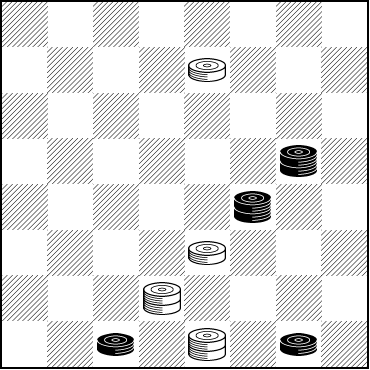
BLACK
Black to Play and Win
B:WK2,K7,10,26:B1,3,K14,K17
So, you say, it's pretty straightforward, right? What's the point of a problem with such an "obvious" solution? Well, then--- this one could indeed "bug" you if you get it wrong. Experienced players won't have any difficulty. But the rest of us might, shall we say, get, um, bitten[1].
Solve it quickly and then let your mouse crawl over to Read More to see the solution.
[1] June bugs don't actually bite humans, but allow us this small artistic liberty.![]()
Contest 62: Double Breeches
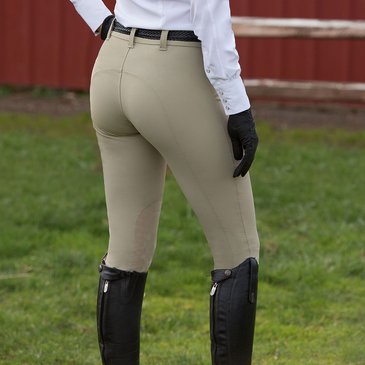
Today we won't go into the difference between breeches and britches, but we will mention that breeches are pants (or if you like, pantaloons) that cover the, um, posterior. Today that's true of most if not all pants.
What then, are double breeches? In terms of pants, we can't really say, but our Research Department did point out that the word breeches is what's known as a double plural. In old English, broc was a word which had a plural form of brec. In time the word evolved and added the usual -(e)s suffix and thus became the double plural, breeches.
If that's just a bit too complicated, fortunately in checkers double breeches has a very specific and easy to understand meaning, as you'll see in Bill Salot's 62nd World Championship Problem Composing Contest, which has double breeches as its theme. Access the contest problems here.
To get you started, here's a sample problem illustrating the contest theme. It's by grandmaster composer Ed Atkinson and was the winner of Contest 33 in June, 2017.
BLACK
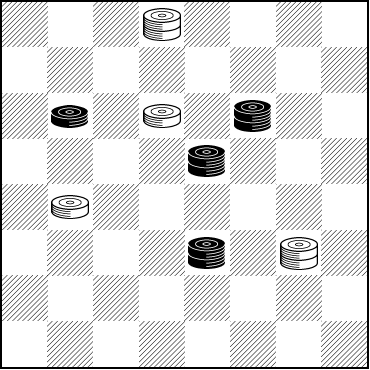
WHITE
White to Play and Draw
W:WK2,10,17,K24:B9,K11,K15,K23
After you've enjoyed solving this problem, click on Read More to see the solution, and then go to the contest page to cast your vote for your favorite among four additional problems.![]()
Warm Up

It's the beginning of May, and in the Northern Hemisphere, the weather should be warming up, likely something very welcome to those of you in colder climes.
Along those lines, today we have a speed problem that is itself in the nature of a "warm up" of the mental type. It's quite easy, and may be something of a good starter to get your brain into checker mode at the start of an evening's play or study.

An experienced player will solve it in a couple of seconds; novices may have to think a bit, but in any case, it's good fun.
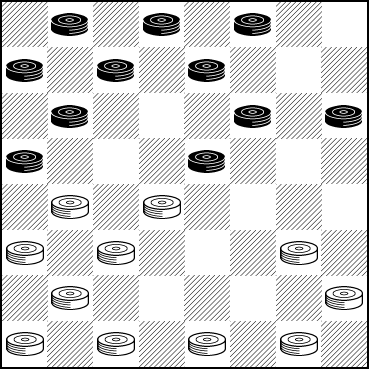
WHITE
White to Play and Win
W:W17,18,21,22,24,25,28,29,30,31,32:B1,2,3,5,6,7,9,11,12,13,15
Were you able to get it? We thought so, but still, warm up your mouse by clicking on Read More to check your play.![]()
Contest 61: Virile Variations

The latest entry in Bill Salot's long-running series of top-notch problem composing competitions is titled Virile Variations and features devious problems with "fake" solutions that conceal the real solution. The idea is that the solver will be misled into thinking the fake solution, which is both appealing and almost but not quite correct, is the real one.
A generous selection of six settings make up the contest entries, which you can quickly access by going to contests.checkermaven.com.
As an introduction, here's a sample problem from 1892, attributed to joint authors G. H. Slocum and C. Hefter.
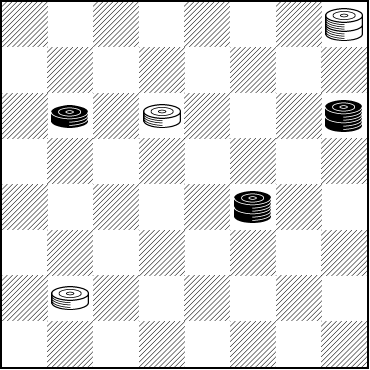
WHITE
White to Play and Draw
W:WK4,10,25:B9,K12,K19
Give this one a try, click on Read More to see the solution (and the fake solution), and then go on over the contest page for six more challenging problems ... and be sure to vote for your favorite!![]()
There's More Than One Way To Do It

There's a sort of a sport played by computer nerds called Vim Golf. Now, bear with us for a moment.
Vim is a famous and venerable text editor used mostly on Unix systems but on many other systems as well. It is unique and has its faithful adherents. It's fast and is famous for being able to accomplish tasks with a minimum of keystrokes. Enter Vim golf.
In Vim golf, players solve an often challenging editing problem, using nothing more than a stock version of the Vim editor. There's more than one way to do it, but the challenge is to solve the problem--- put the ball in the hole, if you will--- with a minimum number of (key)strokes. Just like golf, only very techie. It's a lot of fun--- if that's your sort of thing.
In checkers, too, there is often more than one way to play a position. So we introduce draughts golf with a problem sent along by regular contributors Lloyd and Josh Gordon of Toronto. The position below has several ways for Black to win, but there is a best way.
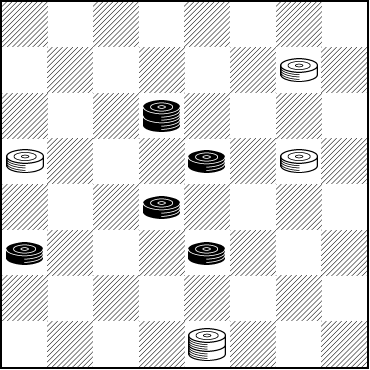
BLACK
Black to Play and Win
B:WK2,17,20,25:B10,12,15,18,K23
Black is a piece up and absent any mitigating factors should of course win. But can you win quickly? Can you find the shortest win? Can you find all of them? Maybe you can't get a hole in one, but can you make par? Take a "shot" and then club Read More to see the solution.![]()
Cute and Acute

Can something be both cute and acute, as in "sharp" or an "acute angle"? We think so, and we're about to show you an example.
This month's speed problem is another easy one, but it's also definitely cute. And acute. You'll see what we mean when you solve it. Beginners might have to think a bit but experienced players should solve it quickly.
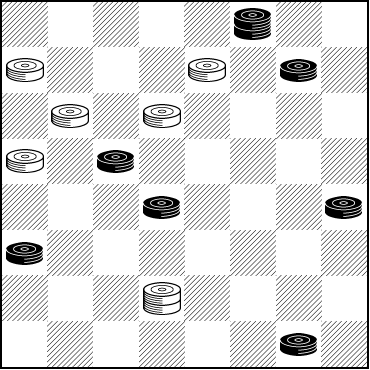
BLACK
Black to Play and Win
B:WK7,20,23,24,26,28:B1,12,13,15,19,25,K30
When you've come up with your solution, a cute (or should that be acute) quick of the mouse on Read More will allow you to check your solution.![]()
Zugzwang! Problem Contest 60
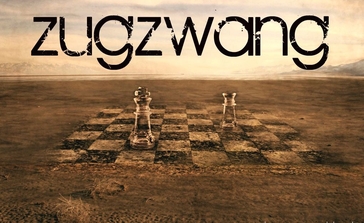
Zugzwang. Compulsion to move, made up of the German roots Zug, move (among other meanings) and zwang, compulsion or force. A situation in which a player has to move even though it will mean losing or incurring a major disadvantage. It's a term commonly associated with the game of chess, but it applies to checkers as well.
The 60th entry in Bill Salot's amazing ongoing series of checker problem composition contests features the theme of Zugszwang with four stellar problems illustrating this principle. Solve them, enjoy them, and by all means vote for the one you think should be the winner.
As always, the action takes place on our current contest page.
To get you started, here's an example. It's by Jim Loy and was the winning problem in Contest 34, August 2017, which featured the same theme as today's contest.
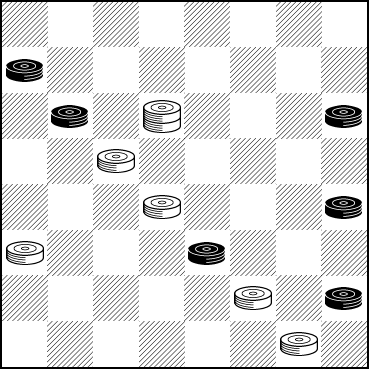
WHITE
White to Play and Win
W:WK10,14,18,21,27,32:B5,9,12,20,23,28
After you've tried this one, click on Read More to see the solution and then hurry over to the current contest page for more Zugzwang enjoyment.![]()
New Year's Day 2022

This column is being published on New Year's Day, 2022, and The Checker Maven wishes that the New Year will bring everyone health, happiness, and everything that you might wish for.

We don't know if or how you might have celebrated on New Year's Eve, but we know that it can often be a time of ... er ... a bit of overindulgence. If you did ... er ... overindulge a little, perhaps today you aren't ready to take on a grandmaster level checker problem. So instead, we'll take it easy on you and present a very nice, but not too difficult problem sent along by regular contributors Josh and Lloyd Gordon of Toronto.
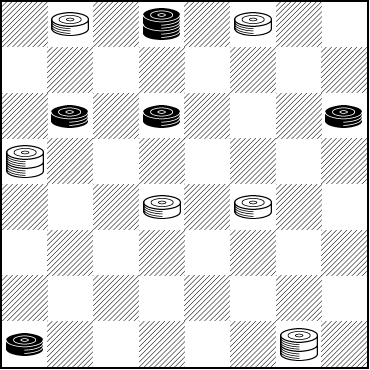
BLACK
Black to Play and Draw
B:WK1,14,15,K20,30,32:B4,21,23,24,K31
This one may take a short moment of thought but shouldn't tax you too much, and might help you to clear your head if that's necessary for you today. Give it a try and then click on Read More to check the solution.![]()
The Checker Maven is produced at editorial offices in Honolulu, Hawai`i, as a completely non-commercial public service from which no income is obtained or sought. Original material is Copyright © 2004-2025 Avi Gobbler Publishing. Other material is public domain, AI generated, as attributed, or licensed under CC1, CC2,CC3 or CC4. Information presented on this site is offered as-is, at no cost, and bears no express or implied warranty as to accuracy or usability. You agree that you use such information entirely at your own risk. No liabilities of any kind under any legal theory whatsoever are accepted. The Checker Maven is dedicated to the memory of Mr. Bob Newell, Sr.

